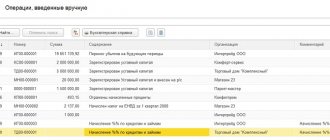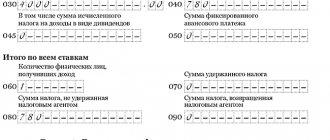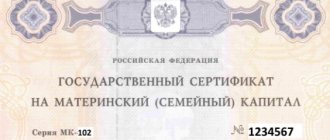Reflection in legislation
Depending on the branch of legal regulation that controls the process of gratuitous transfer of assets, the meaning of the definition of “financial assistance” changes. The Civil Code considers it in the form of a transfer of property by third parties or founders as a gift.
Free financial assistance in accounting is understood as the result of charity or targeted financing. The Tax Code provides for a number of exceptions and additional comments on the taxation of gifted property.
Types of gratuitous assistance
Cash is the main way to provide financial support to an enterprise. They can be transferred from other legal entities and individuals, the state or founders for certain purposes.
Free financial assistance can be provided not only in monetary terms, but also through the transfer of property in the form of fixed assets or intangible assets. For example, the ownership of an enterprise can be transferred to:
- property rights;
- work or services without payment;
- intellectual property;
- securities.
Timely financial assistance on a free basis can bring an enterprise out of a difficult situation and even avoid bankruptcy.
Accounting for the provision of property support
An enterprise that has made an act of donating property to another legal entity must necessarily reflect the transaction in its accounting data. According to the instructions of the Ministry of Finance of the Russian Federation, expenses for charity are included in the category of other expenses.
To collect information about transferred donations, account 91 is used. Its structure is active-passive. The provision of gratuitous financial assistance is accompanied by correspondence with 91 debited accounts.
Postings carried out by the benefactor
The process of gratuitous transfer of property (including money) must be documented by both the receiving and the giving party.
Inaccuracies in accounting can lead to violations of tax laws, which entails liability. Typical account assignments reflecting the charity process
| Dt | CT | Characteristics of a business transaction |
| 76 | 51 | Free financial assistance provided |
| 76 | 41 | Goods donated for charitable purposes |
| 76 | 04 | Securities have been transferred to the ownership of another company |
| 91 | 76 | Expenses in connection with the donation of property are included in other |
| 91 | 68 | The amount of VAT charged on the transferred goods |
| 99 | 68 | The tax liability is reflected from the amount of funds transferred free of charge |
To account for the transfer of property, current account 76 is used, which is debited with accounts containing information about the assets donated. After which, the amounts of expenses are written off as a debit to account 91, and also, if necessary, reflect the amount of tax liabilities.
How to apply for financial assistance from the founder
The Federal Law “On Accounting” dated December 6, 2011 No. 402-FZ requires that all receipts to the organization’s current account and cash desk, including gratuitous assistance, be documented.
The most common method of gratuitous assistance is the conclusion of a gift agreement or gratuitous financial assistance between the one who contributes money and the one who receives it.
Also, the founder can use funds to increase the authorized capital, but in this case, his share must be increased (naturally, except in the case when the company has one founder), and the assistance can no longer be considered gratuitous. In this case, registration occurs in the following way:
- An application is drawn up indicating the amount and conditions for its contribution to the authorized capital.
- Other owners express their consent and decide to make amendments to the company's charter.
- All changes (re-registration of shares) must be made within 6 months after the decision is made.
In any case, before providing assistance, the founder must agree on this at a general meeting (or make a decision individually, if there is only one founder).
Tax accounting of gratuitous assistance
Providing financial support to other legal entities is regulated not only by accounting standards, but also by the instructions of the Tax Code of the Russian Federation. The main tax payments levied on amounts of property assistance are VAT and income tax.
Legislation in force in 2021 requires enterprises that provide gratuitous financial assistance to allocate funds from their net profits. According to the Tax Code of the Russian Federation, expenses associated with charity and targeted contributions are not included in the calculation of the taxable base.
VAT
In 2021, enterprises can count on benefits when paying VAT. The transfer of property rights, services, works or goods free of charge is not subject to VAT. It is worth considering that the list does not include excisable products.
To obtain rights to the benefit, you must comply with the requirements of Law No. 135 Federal Law, which details the list of charitable activities that fall under VAT exemption. If an enterprise is engaged in financial support of a legal entity using transactions, both subject to VAT and non-taxable, they should be kept separately.
Documentation of donation of property
The provision of gratuitous financial assistance must be recorded in documents. The exception is cases of transfer of funds to non-profit organizations that do not pursue the goal of using the funds for business activities. In other cases, the company must have the following documents on hand:
- agreement with the party receiving financial assistance;
- copies of accounting registers on the acceptance by beneficiaries of amounts for accounting;
- confirmation of the intended use of the funds received.
The list contains the main papers that are necessary to formalize the act of charity. In some cases, additional documents may be required.
Free financial assistance from the founder: documentation
Quote: The sole founder, who is also the general director, wants to deposit financial assistance into the LLC's current account (the authorized capital of the LLC has been paid in full). How to reflect this in accounting and what documents need to be drawn up? Having considered the issue, we came to the following conclusion: The provision of free financial assistance to the society is carried out on the basis of the decision of the founder. The accounting procedure for assistance received depends on the purposes of its contribution specified in this decision. If the organization plans to return the funds received from the founder, then this financial assistance is a loan, which is issued in writing. In this case, the funds received are taken into account depending on the loan repayment period in account 66 “Short-term loans and credits” or 67 “Long-term loans and credits”. Rationale for the conclusion: Procedure for accounting for gratuitous financial assistance The right of company participants to independently make contributions to the company’s property is not limited by law. The founder has the right to provide financial assistance to the company by gratuitously transferring funds, securities or other property. According to paragraph 1 of Art. 27 of the Federal Law of 02/08/1998 N 14-FZ “On Limited Liability Companies” (hereinafter referred to as Law 14-FZ), the participants of the company are obliged, if provided for by the charter, by decision of the general meeting of participants to make contributions to the property of the company. At the same time, in accordance with clause 4 of the same article, contributions to the company’s property do not change the size and nominal value of the shares of the company’s participants in the authorized capital of the company. According to Art. 39 of Law 14-FZ in a company consisting of one participant, decisions on issues falling within the competence of the general meeting of company participants are made by the sole participant of the company individually and are drawn up in writing. Thus, in order to document an additional contribution (financial assistance), it is necessary to formalize in writing the Decision of a participant in a limited liability company, which we recommend reflecting: - the purpose of making an additional contribution; — amount of additional deposit; — form of making an additional contribution. Accounting The accounting procedure for received funds depends on the purpose of making an additional contribution specified by the founder in the decision. The procedure for accounting financial assistance contributed for the purpose of replenishing the organization's working capital According to the Instructions for the use of the Chart of Accounts for accounting financial and economic activities of organizations, approved by order of the Ministry of Finance of the Russian Federation dated October 31, 2000 N 94n (hereinafter referred to as the Chart of Accounts), to summarize information about the value of assets received by the organization free of charge, a subaccount 98-2 “Gratuitous receipts” is opened to account 98 “Deferred income”. In accordance with clause 8 of PBU 9/99 “Income of the organization” (hereinafter referred to as PBU 9/99), funds received free of charge are reflected as part of other income. Due to the fact that funds received free of charge from the founder are recognized as income in accounting, but do not increase the tax base for income tax (clause 11, clause 1, article 251 of the Tax Code of the Russian Federation), a permanent difference arises in the organization’s accounting, leading to the formation permanent tax asset (clause 4 of PBU 18/02 “Accounting for income tax calculations”). To reflect this operation on the accounting accounts, the accountant must make the following entries: Debit 51 Credit 98, subaccount “Gratuitous receipts” - reflects the amount of gratuitous funds received; Debit 98, subaccount “Gratuitous receipts” Credit 91-1 - funds received free of charge are recognized as other income; Debit 68 subaccount “Calculations for income tax” Credit 99 - a permanent tax asset has been accrued. By virtue of clause 2 of PBU 18/02 “Accounting for calculations of income tax of organizations”, the norms of this Regulation may not be applied by small businesses and non-profit organizations. The procedure for accounting for financial assistance contributed for the purpose of forming additional capital If the founder indicates in the decision that financial assistance in the form of funds is contributed for the purpose of forming additional capital, then for these purposes the chart of accounts for the accounting of financial and economic activities of organizations designates account 83 “Additional capital" (letter of the Ministry of Finance of the Russian Federation dated April 13, 2005 N 07-05-06/107). Debit 51 Credit 83 - reflects the amount of funds received free of charge. The procedure for accounting for financial assistance in the event of a subsequent return of funds to the founder. If the organization plans to return the funds received from the founder, then these funds can be considered as a loan (Article 810 of the Civil Code of the Russian Federation). In accordance with paragraph 1 of Art. 807 of the Civil Code of the Russian Federation, under a loan agreement, one party (the lender) transfers money into the ownership of the other party (borrower), and the borrower undertakes to return the same amount of money (loan amount) to the lender. The loan agreement is considered concluded from the moment the money or other things are transferred. According to paragraphs. 1 clause 1 art. 161 of the Civil Code of the Russian Federation, transactions of legal entities between themselves and with citizens must be concluded in writing. In accordance with paragraph 1 of Art. 162 of the Civil Code of the Russian Federation, failure to comply with the simple written form of a transaction deprives the parties of the right in the event of a dispute to refer to witness testimony to confirm the transaction and its terms, but does not deprive them of the right to provide written and other evidence. Therefore, a loan agreement should be concluded in writing between the founder and the organization. According to Art. 809 of the Civil Code of the Russian Federation, the loan agreement is compensated, which is expressed in the payment by the borrower of interest on the loan amount. The condition that the contract is free of charge must be specified in the text of the contract itself. Since the purpose of providing funds is to provide financial assistance to the organization, the agreement should indicate that the founder is providing an interest-free loan. Based on Art. 814 of the Civil Code of the Russian Federation, a loan agreement can be concluded with the condition that the funds received are used for certain purposes (for example, to pay wages). In this case, the borrower is obliged to ensure that the lender can control the intended use of the loan amount. At the same time, establishing in the agreement a specific purpose for using the loan is not a mandatory condition for the parties. The agreement may also provide for a broader use of funds received (for example, replenishment of working capital) (Article 421 of the Civil Code of the Russian Federation). In addition, the contract can provide for other conditions, for example, repayment of the debt in parts, a repayment period, etc. Accounting for a loan received The chart of accounts reflects loans received depending on their repayment period. To summarize information on the status of short-term (for a period of no more than 12 months) loans and borrowings received by an organization, Account 66 “Settlements for short-term credits and borrowings” is intended in the Chart of Accounts; for long-term loans (for a period of more than 12 months) an Account is provided 67 “Calculations for long-term loans and borrowings.” The amounts of loans received by the organization are reflected in the credit of account 66 (67) and the debit of accounts 50 “Cash”, 51 “Settlement accounts”, 52 “Currency accounts” and others. Let's consider the correspondence of accounts when receiving and returning an interest-free loan from the founder: Debit 51 (50) Credit 66 (67) - an interest-free loan was received from the founder; Credit 66 (67) Debit 51 (50) - return of an interest-free loan. Answer prepared by: Expert of the Legal Consulting Service GARANT Andreeva Irina Response quality control: Reviewer of the Legal Consulting Service GARANT auditor Monaco Olga May 20, 2010
Accounting for receiving financial assistance
According to the instructions for using the standard chart of accounts, passive account 98 (subaccount 2) is used to reflect information on the amounts of gratuitous receipts. In this case, the accounts of the property transferred into possession are debited.
As the allocated funds are used, the amounts are recognized as non-operating income, partially written off to account 91.1. This is necessary according to PBU: assets received free of charge as a result of charity are considered non-operating income and must be reflected in account 91. A decrease in the amount of assistance received occurs when:
- release into production of MPZ;
- calculation of depreciation charges;
- repayment of accounts payable;
- carrying out other operations using targeted financing.
Accounting data must fully reflect the sources of non-operating income and the conditions for their application.
1s 8 3 accounting for non-refundable financial assistance postings
Accounting for the provision of property support An enterprise that has made an act of donating property to another legal entity must necessarily reflect the transaction in accounting data.
According to the instructions of the Ministry of Finance of the Russian Federation, expenses for charity are included in the category of other expenses. To collect information about transferred donations, account 91 is used. Its structure is active-passive.
The provision of gratuitous financial assistance is accompanied by correspondence with 91 debited accounts.
Transactions carried out by the benefactor The process of gratuitous transfer of property (including money) must be documented by both the receiving and the giving party. Inaccuracies in accounting can lead to violations of tax laws, which entails liability.
Important
According to the instructions for using the standard chart of accounts, passive account 98 (subaccount 2) is used to reflect information on the amounts of gratuitous receipts. In this case, the accounts of the property transferred into possession are debited. As the allocated funds are used, the amounts are recognized as non-operating income, partially written off to account 91.1.
This is necessary according to PBU: assets received free of charge as a result of charity are considered non-operating income and must be reflected in account 91. A decrease in the amount of assistance received occurs when:
- release into production of MPZ;
- calculation of depreciation charges;
- repayment of accounts payable;
- carrying out other operations using targeted financing.
Accounting data must fully reflect the sources of non-operating income and the conditions for their application.
Postings for gratuitous financial assistance from the founder or director
Attention
The founders have the right to provide financial assistance to the company by gratuitously transferring funds, securities or other property.
The purposes of gratuitous assistance may be: conducting statutory activities; payroll calculations; transfer of taxes; payments for rent, communications and office maintenance; payment of travel expenses; repayment of loan obligations, etc.
The document on the basis of which free financial assistance can be received is, as a rule, an agreement on the provision of financial assistance.
In accounting, funds received by a Russian organization from the founder free of charge are other income and are recognized on the date of their receipt (clause 7 of PBU 9/99 “Income of the organization,” approved by order of the Ministry of Finance of Russia dated May 6, 1999 No. 32n). In tax accounting in accordance with paragraphs. 11 clause 1 art.
Free financial assistance from the founder
If it is necessary to cover losses and prevent bankruptcy, the founders have the right to provide financial assistance to their organization.
This can be done in the form of a loan, a contribution to the organization’s property (only for LLCs) or donating funds (property).
Funds received from the founder during the year must be included in other income:
- Dt 50 (51) - Kt 91-1 - receipt of gratuitously transferred funds from the founder.
It is worth noting that account 98.02 “Gratuitous receipts” is not used when receiving financial assistance in the form of cash, since it takes into account income from gratuitous receipts of non-monetary assets. Example 1 - the founder’s contribution to the current account; on September 10, 2015, she received free financial assistance in cash from the founder A.A. Ivanov.
Write the entries if the founder deposits financial assistance into the current account
Based on clause 1 of Article 251 of the Tax Code of the Russian Federation, gratuitous assistance from a founder who owns more than 50% of the authorized capital is not included in income when calculating tax. Therefore, a difference arises in accounting, forming a permanent tax asset (PBU 18/02), which is reflected by posting Dt68 Kt99.
If the founder owns a share of 50% or less, gratuitous assistance should be recognized as income in tax accounting. Account 98 “Gratuitous receipts” is not used when receiving financial assistance. It can take into account the amount of gratuitous receipt of non-monetary assets.
It is important to know that assistance in the form of property may not be recognized as income in tax accounting only if the company does not transfer it to third parties within a year.
Source: https://lcbg.ru/1s-8-3-uchet-bezvozvratnoj-finansovoj-pomoshhi-provodki/
Tax accounting for amounts received free of charge
Enterprise finances received as a gift are subject to special taxation. VAT is required to be paid only in cases where:
- the organization uses the received goods for further sale;
- donated products are excisable;
- assistance is provided in the form of goods, services or works, as well as fixed assets and intangible assets, which will then be transferred to third parties.
Donated amounts, as a rule, are included only in the calculation of the beneficiary’s income tax, and VAT is not paid on the funds. The enterprise receiving assistance is obliged to take it into account when calculating income tax if at least one of the conditions is violated:
- its initial capital consists of 50% or more of the contribution of the benefactor;
- The authorized capital of the organization providing assistance consists of 50% or more of the contribution of the beneficiary.
Thus, only financial assistance from the founder is not included in the calculation of income tax. If the funds were received from third-party legal entities or individuals, the beneficiary is required to include the amount in the calculation of income tax.
In cases where the party receiving assistance is an individual, personal income tax must be paid.
Financial assistance agreement between legal entities: sample
It is worth mentioning separately about the agreement when assistance is provided by one legal entity to another. In this case, a gift agreement cannot be made - it may be considered void.
This follows from the provisions of Article 575 of the Civil Code of the Russian Federation, which prohibits gift agreements between legal entities if the subject of the agreement (including funds) is valued at more than 3,000 rubles.
In this case, you can use the following methods:
- Conclude a free financing agreement.
- Conclude an agreement on an interest-free loan, and then not claim it and write off overdue payments (Article 415 of the Civil Code of the Russian Federation). Borrowed funds are not taxed, as are interest savings, but the forgiven loan amount, which forms non-operating income for the borrower, is subject to taxation. A tax base is not formed when funds are received from a founder who owns at least 50% of the borrower's authorized capital.
- Contribute funds to increase the authorized capital. In this case, the organization that contributed the money must increase its share in the authorized capital.
The founder has the right to provide financial assistance to his company. The law does not establish a list of purposes for which this money can be spent. In accordance with the law, funds received must be documented. If the founder who contributed the assistance is an individual, then a gift agreement can be concluded with him. In cases where assistance is provided by another organization, it cannot be formalized by donation. In some cases, the amount of money contributed free of charge by the founder is not taxed.
Postings with gratuitous financing
Let's consider typical operations carried out by an enterprise accountant when receiving financial assistance.
Account assignments made when accepting a gift for accounting
| Dt | CT | Characteristics of a business transaction |
| 51 | 98.2 | Funds received free of charge |
| 60 | 51 | The money was used to pay for purchased supplies |
| 10 | 60 | Materials accepted for accounting |
| 98.2 | 91.1 | Part of the financial assistance amount is included in non-operating income |
| 66 | 51 | Funds of gratuitous support for loan repayment were transferred |
| 68 | 99 | Tax asset accrued on profit from financial assistance |
| 19 | 60 | Accepted for accounting for VAT on excisable goods received free of charge |
After using financial assistance funds, they must be reflected in the item of non-operating income.
How to transfer money from the founder to the company
The material was published in the magazine “Practical Accountants” (No. 1, 2003). The magazine is published by the publishing house “Berator-Press”
V. FEDOROV, expert editor
Very often, newly created companies experience certain financial difficulties. This is due to the fact that the company begins to generate income only after some time, and expenses must be incurred today.
As a rule, the founder helps in this situation and transfers the necessary funds to the company’s account. What is the best way to formalize the receipt of this money so as not to pay additional taxes either to the company or to the founder himself? Let's consider the two most effective ways to solve this problem: using a loan agreement and a gift agreement.
Loan agreement









